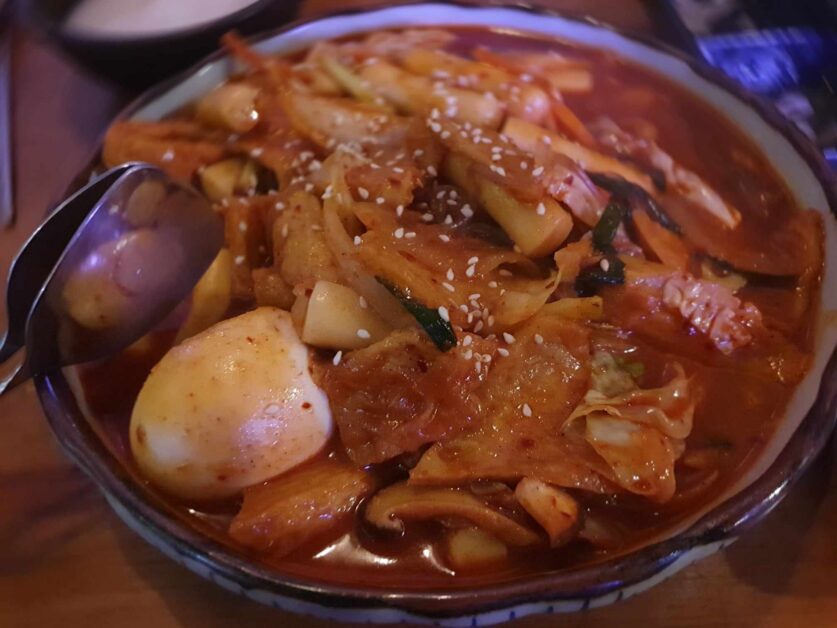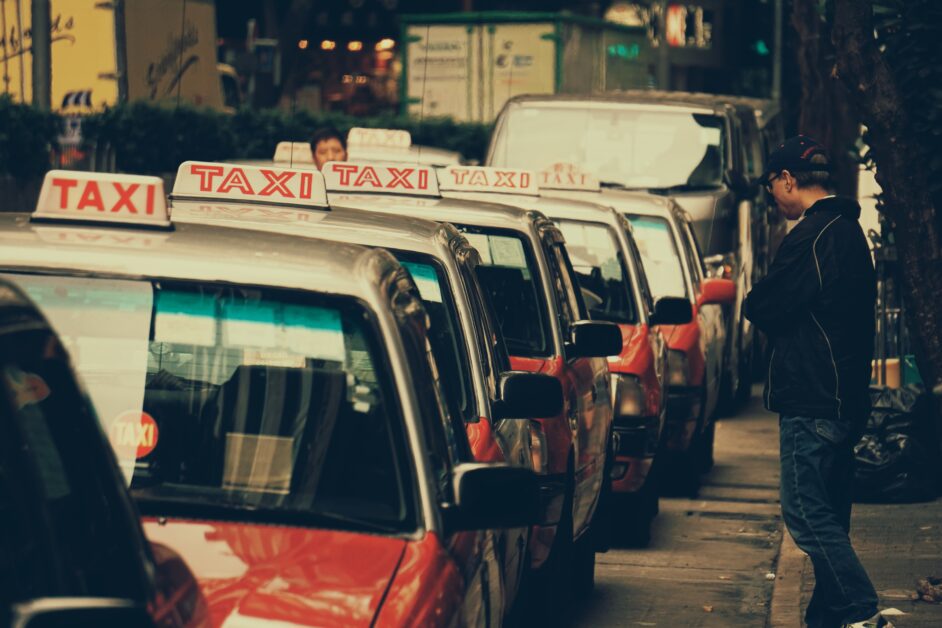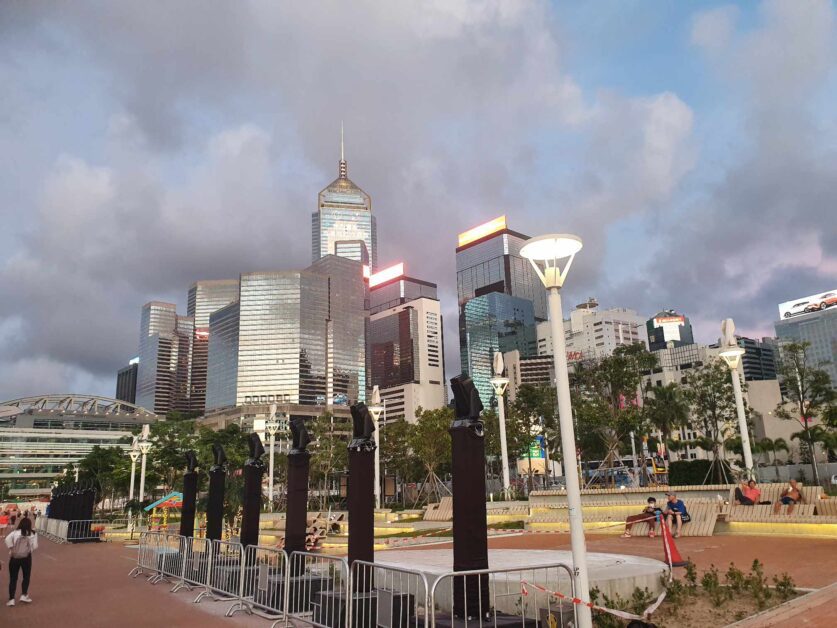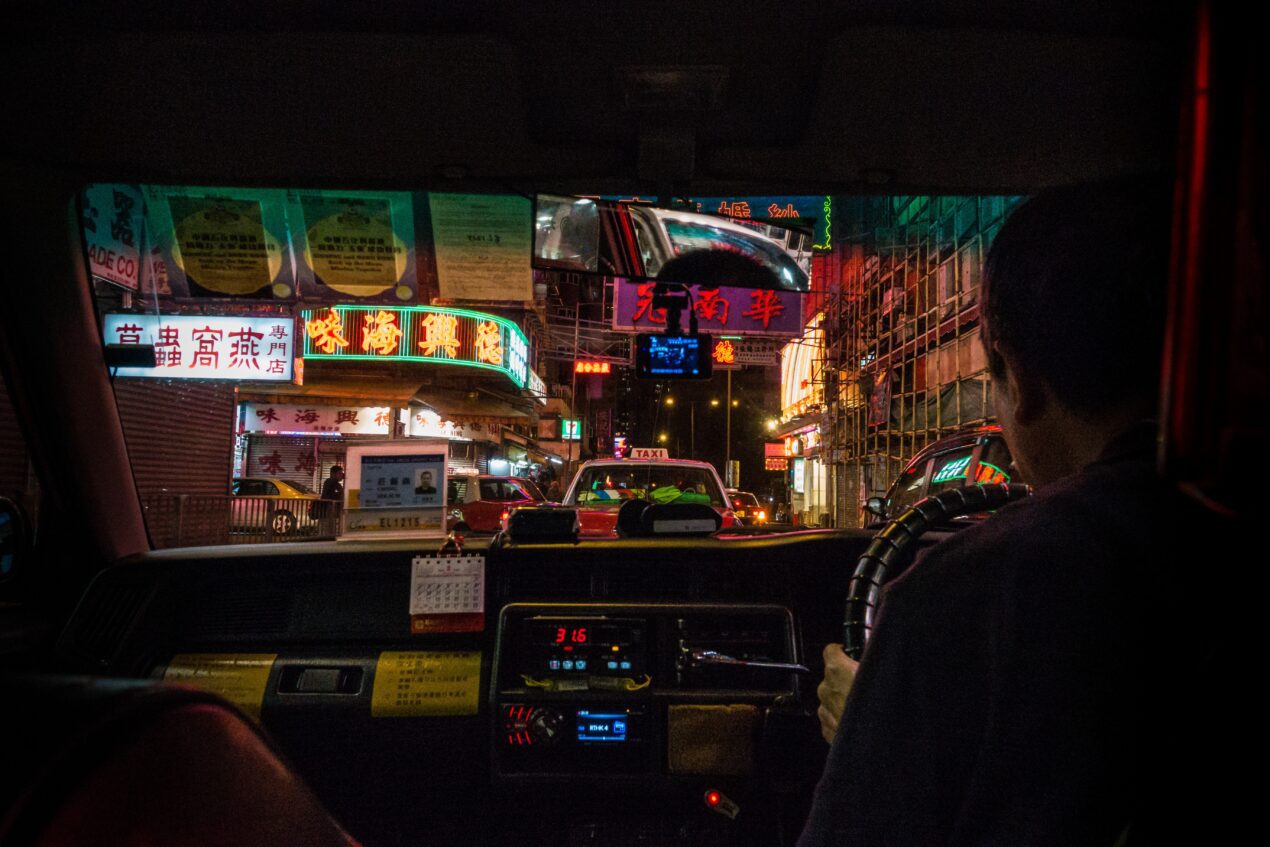Is There Uber in Hong Kong? Guide to the World’s Most Popular Ride-Sharing App
Reporting live on the ground from Hong Kong, this is Big Body with your evening news. Tonight’s story, “Is there Uber in Hong Kong?” This is a common question I’m asked by friends (and the occasional reader) traveling from the U.S. to Hong Kong.
If you’re like me, you don’t always carry cash on you and want to ensure that you have a backup means to get around in case you forget to stock up on some cold hard $HKD. Or maybe, you just prefer the solitude and cleanliness of a fully manicured Uber Black. Or maybe you’re a crypto evangelist who got demolished on 100x leverage DeFi moonshots, has turned to UBER call options, and is now trying to personally inject some pennies into the bottom line by Ubering to work so that your fiancé doesn’t leave you and take the dog with her. Been there, done that, got called a “loser” (actually worse) on r/WallStreetBets, and picked up the t-shirt along the way.
Whatever the case, it’s a reasonable question to ask.
As someone who has slugged it out many a time in the morning on Hong Kong’s MTR (metro) and had that one old guy with an extremely long face mole hair (everyone knows ‘Old guy with long mole hair’) touch my arm and been caught in a sensory assault wave of a Pepé Le Pew-esque musk from the entirety of Car 7 on the Island Line, I don’t blame you for wanting to skip that altogether (But then again, maybe it’s a right of passage…question mark?).
Yes, there is Uber in Hong Kong and it is (generally) an effective method of transportation for those looking to navigate Hong Kong Island, Kowloon, and even New Territories. However, I would caution you to avoid heavily leaning on Uber as I personally consider Hong Kong to be one of the most convenient cities in the world for transportation – and appointing Uber as the supreme leader of travel would surely be a disservice to your trip and stay in the ‘Fragrant Harbor’.
Here’s a bit about Uber’s existence in Hong Kong and some frequently asked questions you might have about the world’s most popular ride-hailing app.
Does Uber Exist in Hong Kong?

Uber is readily available in Hong Kong. It first arrived in Hong Kong in 2014 and has remained a formidable transportation option for residents (and commuters) across the city, achieving just under 4,000% growth in ridership (between 2014 and 2019) and an estimated 14,000-plus drivers. As of the date of publication, Uber currently offers the following types of cars in Hong Kong:
- Uber Black
- UberX
- UberXL
- Uber Taxi
Uber also offers the following services to Hong Kong riders:
- Flash
- Assist
- Comfort
- Uber Pet
In a city with a storied and robust taxi history, unsurprisingly, Uber Taxi quickly became the most popular type of offering for Uber in Hong Kong. As of 2021, Uber has served an estimated 1/3rd of the city’s population, with Uber’s Taxi offering, having only launched in 2020, accounting for the number 1 used Uber Taxi location across the globe (and 25% of the total Uber Taxi revenue).
So, to answer the question – not only does Uber exist in Hong Kong but it is thriving. Uber is now one of the preferred transportation apps and options across the city for travel. But can the same be said about Uber’s food delivery service, Uber Eats?
Does Hong Kong Have Uber Eats?

One of my favorite Korean restaurants in Hong Kong: Maru & J48
Uber Eats came onto the Hong Kong food delivery scene in 2016, just two years after Uber’s emphatic ride-sharing entrance. However, just five years later (in 2021), Uber Eats wound down their operations after unexpectedly slow growth and in furtherance of building out Uber Taxi.
As of 2023 and the date of publication – Hong Kong does not have Uber Eats.
This should be no surprise as the Hong Kong food delivery market is (and was) already dominated by the ever-warring Deliveroo and FoodPanda. I can’t say that I ever actually used Uber Eats during its five short years in Hong Kong. However, Deliveroo and FoodPanda are two platforms I use regularly and will support and vouch for any day of the week.
I may or may not even pay for Deliveroo Plus (free delivery for minimum order requirements being met) because of Pici and prime rib benders I would go on while training for a powerlifting competition.
At the end of the day, restaurant coverage and active users just weren’t there for the Uber Eats bid to overtake the food delivery market in Hong Kong.
With such a thriving gig economy and ride-sharing platforms propelled/represented by Uber in Hong Kong, surely it must be legal, right? Well…that’s where it gets a bit tricky. Let’s take a look.
Is Uber Even Legal in Hong Kong?
It may come as a surprise that for a platform and app serving such a high percentage of Hong Kong residents Uber is NOT legal in Hong Kong. This also applies to other ride-sharing platforms and apps (ex. Lyft) which do not possess a ‘hire-car’ permit. However, because of its existence and Uber’s continued expansion in the city, a more appropriate designation might be that it’s ‘unregulated’ and exists in a ‘gray area’.
Without getting too far into the weeds, Hong Kong’s Court of Final Appeal reaffirmed this illegality in the 2020 case of HKSAR v. Yuong Ho Cheung & Ors [2020] HKCFA 29. Analyzing Section 52(3) of Hong Kong’s ‘Road Traffic Ordinance’, the court found that any vehicle treated as driving a vehicle to transport passengers requires a “hire car permit,” just as public buses and taxis require one.
This is a criminal offense that is punishable by up to 3 months imprisonment (for drivers) and an HK$5,000 fine for first offenses. For subsequent convictions, this rises to up to 6 months imprisonment and an HK$10,000 fine. There has been considerable lobbying over the years by the taxi (and automotive) industry, to increase the penalty to HK$25,000 and impoundment of the vehicle for six to twelve months (depending on previous violations by the driver).
From my understanding, as long as an Uber driver does have the requisite ‘hire car permit’ then all is well. The core legal argument for Uber always seems to boil down to the fact that they are a “technology company” and simply supply the communication methods and devices for drivers – meaning that they are under no obligation to follow transportation industry regulations and laws.
This may be why Uber Taxi has taken off to the degree it has (popularity-wise), as Uber Taxi drivers must possess/do possess a ‘hire car permit’ (like all traditional taxi drivers in Hong Kong) and strike a balance between the two competing interests.
But what about if you’re just a simple, straight-laced Uber rider like myself?
Is It Illegal For Riders to Use Uber In Hong Kong?
Although there’s still uncertainty and a somewhat opaque landscape surrounding Uber’s existence and driver’s legal liability, it is legal for riders to use the Uber app and hail a ride via the ridesharing platform or app in Hong Kong.
So don’t worry, you’re not going to end up in Stanley Prison with Rurik Jutting or figuring out how to wire money to the Hong Kong police to pay off a fine, just because you were too lazy to walk to Wan Chai.
Is Uber Cheaper Than a Taxi in Hong Kong?
In my experience, Uber is not cheaper than a traditional taxi in Hong Kong, which definitely makes it an exception in today’s global Uber landscape (where the opposite is often true). Taxis in Hong Kong boast stable rates while Uber rates may fluctuate based on demand, drivers, and the time of day (ex. Surge pricing).
The closest you will come to more traditional taxi pricing in Hong Kong is by taking an Uber Taxi, which now boasts the option for metered taxi rides on top of its already fixed pricing option. Selecting the metered taxi option means that what you end up paying won’t be influenced by supply and demand or surge pricing – just the meter ticking away.
What I would recommend if you’d like to compare actual rates between Uber and a Taxi is to first search the rate provided to you on Uber and then reconcile that against (a) HK Taxi App, or (b) by searching on Google and seeing the estimated route fare.
Pale Ale Travel Tip: Maybe you are taking an Uber with whoever you are courting at the moment or maybe you are single and lonely like me, either way, you need some exciting activities to do. Make sure to read my post breaking down what my perfect day in Hong Kong looks like if you’re in need of some hiking, swimming, or eating ideas.
Why Consider Uber Over a Taxi in Hong Kong?

I initially began using Uber (outside of Hong Kong) as I was under the impression that it was a more affordable, more direct option to taxis. However, in Hong Kong that really isn’t the case. You’d be hard-pressed to NOT find a taxi in most areas across the city or at least some mode of transportation that takes you to a taxi stand. I generally recommend using Uber over taxi in Hong Kong in the following cases:
- You need to reserve a ride several days (or weeks) in advance,
- You’re taking an early morning trip when public transportation isn’t running (ex. To the airport and the Airport Express Line isn’t open yet) and you don’t want to spend time attempting to hail a taxi,
- You’re in a popular nightlife district and trying to get back home at night,
- You want some extra space or peace and quiet when traveling to wherever it is you need to go, or
- You have a mistress or paramour who you can’t be seen in public with (I’m kidding about this one – ride the MTR or bus with your inamorato/inamorata and face the music and stares).
I typically use Uber when I’m wearing my only nice suit (off the rack at Marks & Spencer) and need to get to a wedding, formal dinner, or other event that would just have me drenched in sweat should I navigate the streets uncovered. But you know what? You can use Uber any time you want so disregard the above.
I honestly can’t remember any other city in the world where I’ve run into so many issues with Uber and its drivers. A recurring issue that I frequently experience is when attempting to book a ride, the driver accepts it, and then just never moves towards your location. This is because they are banking on you canceling the ride out of frustration and then pocketing the cancellation fee.
It has almost been comical at points, where they refused to cancel, so I would have my friend book a different Uber. It was only after 30 minutes and when I was several kilometers away that they would make any move towards the location. This has happened more than a handful of times.
I am an ardent supporter of Hong Kong’s taxis. Yes, you will occasionally run into a bad apple who takes you on a bit of a circumlocutory route (thinking you won’t notice), drives like a madman, refuses to even take you, or will drop you off a ways from your destination, but overall, I’ve had generally positive experiences in my six-plus years living in Hong Kong.
A Big Body Taxi Anecdote
I did have one very bizarre taxi experience though where it clearly wasn’t the taxi driver on the license (err…placard) who was driving. I think this is somewhat common as my impression is sometimes you have two two drivers who will split a car and ensure that money is still being pulled in while the other sleeps.
In this case, it was a younger guy, presumably a son or nephew who was filling in for his farjar (his what?) while they were out of commission. He had no idea how to navigate anywhere. And I mean anywhere. He would wildly bang hard Larrys and Rodneys (lefts and rights) down roads that were one-way streets, overshoot key turnoffs, and ask me for directions every twenty seconds. Luckily, it was about 1 AM so there weren’t a ton of other cars on the road.
Ultimately, I told him to stop the car and I sprinted a sub-4:30 kilometer walked the remaining few kilometers home.
The Best Taxi Trip Ever
I remember one taxi ride down to my short-lived Cantonese lessons down in Wan Chai when the driver was bumping ‘Daddy Cool’ by Boney M. We were both head nodding, humming, and repeating that simple but smooth chorus of ‘Daddy, Daddy Coooooooool…’ in unison.
It was a memorable bonding moment. We exchanged fist bumps (and some cold hard HKD cash) as we parted ways and I slunked off to go get berated by my Cantonese teacher Helen for not preparing the day’s grammar lessons.
What Other Available Transportation Modes Are There in Hong Kong?

There’s no Uber atop this mountain (Buffalo Hill).
Hong Kong is a destination of convenience so I recommend against “sleeping on” transportation like the MTR (metro), buses, and mini-buses. Even the Ding Ding (slow but steady tram that carves East to West and vice versa on Hong Kong Island) or ferries (Star Ferry or ferries to outlying islands and other neighborhoods) get the job done when you really need it to.
When in Hong Kong, do as literally everyone else does – as it hasn’t let us down so far.
Get yourself an Octopus card at the Airport (or at any major MTR booth), top it up with several hundred HKD, and boom, you are in business. Or, consider firing up Apple Pay and tapping it at any of the payment portals for whatever transportation you decide to take. The worst-case scenario is that you just round up a few coins or bills to pay as well. You’ll still catch me more often than not on buses or the tram trying to rustle up a few coins at the bottom of my bag to pay the fare.
Using any one of these transportation methods, in my opinion, is just as effective as Uber (if not more effective due to the coverage of Hong Kong’s network) and will cost you a fraction of what you’d pay taking an Uber or Taxi (or UberTaxi).
Pale Ale Travel: Unsurprisingly, the countless transportation options in Hong Kong are a major advantage of living in the city. If you’re curious about several other reasons why I love (and dislike) this city, make sure to check out my post breaking down 30+ pros and cons of living in Hong Kong.
Are There Any Limitations to Uber in Hong Kong?

It’s gonna be tough to get an Uber from this reservoir.
The key limitation that I’ve encountered with Uber in Hong Kong is that there is a lack of available cars once you get away from crowded, more central areas.
For example, my father lives out in Sai Kung – an hour-and-a-half trip away from me (on Hong Kong Island). He doesn’t live in the bustling Sai Kung Town where most tourists typically go and is tucked away in a little village roughly 25 minutes from the Sai Kung Pier. It’s almost impossible to find an Uber at night from his place if I decide I need to head back to Hong Kong Island.
There are also parts of Hong Kong Island where I’ve run into issues finding an Uber, specifically the south side (and southeast side) of the Island (and always when I need to get back from Big Wave Bay).
The point is that the less crowded the area, the harder it is likely going to be to find an Uber. What I would recommend is downloading the Hong Kong Taxi App. This way you don’t have to desperately reload the app to see if there are any available Ubers in your area (“How about now?”) and you can instead order a taxi to come pick you up at your location. This is my go-to anytime I’m in an area where there is a lack of Uber drivers.
Another glaring limitation would be that Uber drivers just don’t know the city like taxi drivers (unless you’re using Uber Taxi). So while they do utilize the Uber GPS and map to navigate to your intended destination, I often find that it isn’t actually the most efficient route or one a taxi driver would take. Ubers also aren’t banging any U-Turns as I’m about 99% sure the GPS/map would never recommend that for safety reasons, so this can entail your driver then circling around in an incredibly inefficient way just to turn around.
At the end of the day, taxi drivers are licensed drivers who have spent countless years honing their craft and memorizing the ins and outs of the city, while Uber drivers are typically less experienced and less familiar with the city. Take this with a grain of salt though as this is just what I’ve personally experienced in Hong Kong.
Tips For Using Uber in Hong Kong
Here are a few tips that I live by when using Uber in Hong Kong. None are revolutionary but they haven’t steered me wrong so far.
- Always check the license plate to ensure it matches the app: This is Uber 101 and the first thing that you should always do when the car arrives. Do not get in the car if the license plate does not match what is written on your app.
- Ensure the car matches the car description in the app: This often coincides with checking the license plate as I’ve had several times in my Uber usage where a completely different car rolled up and I refused to get in.
- Prompt the driver to ask your name: While there may be a bit of a language driver, you can always ask the driver ‘Name?’ when you open the door, and most should know what you are getting at/wanting to confirm.
- Wear your seatbelt: Hong Kong drivers (of all types) might not always be the safest. I have found that Uber drivers (due to the rating system) do take extra care when navigating this city and I have never encountered someone who drove in a dangerous manner. I wish I could say the same about taxi drivers but I’ve definitely had those who thought they were riding with Thelma (or Louise).
- Share your trip details with friends or family: After requesting a ride via the Uber app, swipe up and click ‘Share Trip Status’, which will enable you to share your ride/location with up to five persons from your contact list. I actually do this when going out to Happy Valley as I always somehow get lost at one of my friend’s places and they have to come down to find me, so this makes it easier that they know I’m on my way.
- Download Google Maps [offline if you don’t have data]: This is one of my top hacks for navigating any city that you travel or move to. This will allow you to track exactly where you are even if you don’t have a SIM or data in Hong Kong.
- Dial 999 for emergency help: If the situation has escalated/or looks like it is escalating to an unsafe one, consider calling 999 for emergency help.
- Keep your valuables close to your chest: I’m paranoid no matter where I’m at that my laptop or other valuables will go missing, so I always ensure that I keep my bag square on my lap and tightly secured by these grubby hands of mine.
- Trust your gut: if something smells fishy, it probably is. I have yet to encounter this in Hong Kong when using Uber. But if your Spidey senses tingle when the driver pulls up and things seem out of order, just know that there’s always another Uber or taxi around the corner and you are not obligated to hop in.
Popular Taxi Scams in Hong Kong
Look, I do understand that Uber is so widely used and celebrated because some individuals out there have experienced less than savory interactions with taxi drivers in Hong Kong (or elsewhere in the world). Hong Kong is no different. But then again, I know more than a handful of unscrupulous investment bankers, solicitors, and even educators in this city – so it permeates all professions.
There are several popular taxi scams or ruses that you should be cognizant of when traveling through Hong Kong.
Late-Night Fixed Rate Fare Hikes
One of my least favorite ploys by Hong Kong taxi drivers isn’t a scam per se, but rather extortion. It involves hailing a taxi, typically late at night or in a popular nightlife area, and having the taxi driver demand a fixed price to take you home. I’ve had drivers quote me anywhere from double to five times the amount it would normally cost.
It’s actually gotten so bad at points (primarily in nightlife areas like Lan Kwai Fong) that the Hong Kong ‘Boys in Blue’ have set up task forces to catch these unscrupulous drivers. Inevitably, if you’ve had enough beers and just want to get home, you’ll end up paying for it (occasionally). This is something that I’m guilty of and it’s probably not great to fuel this black hat practice.
The Indirect Route
You may also run into the occasional taxi driver who will milk the route for as long as possible and take you on a somewhat circumlocutory route to get to your destination, which inevitably racks up the meter. Always make sure you know exactly where you are going and try to find an estimate via the HK taxi app or Google before using a taxi. If something smells off, there is a good chance something is in fact off.
Sleight of Hand
It isn’t unheard of to hand a taxi driver a bill of a larger denomination, him to “quick change” it with a bill of a lower denomination while you are distracted and then confidently tell you that you only give him the smaller denomination bill. Always double-check the serial numbers on your bills (if you want to be really careful), take a picture of the serial numbers, or simply announce the amount of the bill that you are handing to the taxi driver when paying.
Pale Ale Travel Story: Roughly 10 years ago, when I first arrived in Hong Kong there was a popular taxi scam. When a rider would exit the taxi, the window’s “glass” pane would shatter. However, this was fake, breakable glass that was installed by the driver, who would then extort you for a hefty sum. This happened to my Spanish buddy and me on a night out in Lan Kwai Fong. It was done in such an obvious way where we were still seated in the back and no one had even touched the door (or glass) and the “glass” shattered all over us. As soon as my buddy showed the guy via Google the breakable glass he used, the guy quickly put his head down and just sped off.
Final Words on Avoiding Hong Kong Taxi Scams
Finally, don’t take an unlicensed (black cab) taxi or follow taxi ‘touts’ encouraging you to skip the queue. There are three primary taxi types: red (serving Hong Kong Island, Kowloon, and New Territories), green (serving New Territories), and light blue (these ones are mostly on Lantau). Each handles its respective location so if you see one out of its primary area, this may be a red sign.
Further, always ensure that the driver starts the meter when you begin moving. This protects against any sly moves to milk you out of some extra dough down the line.
Here is one simple piece of advice that I recommend using as a general guideline rather than as doctrine. Hong Kong is relatively small. So if your meter reads over HK$350-HK$400, then it may be time to start taking a closer look at the situation and assessing where you are in relation to where you need to be (ex. Using Google Maps offline).
At the least, request a receipt from the driver. If they can’t provide it or refuse, consider taking a photo of the license plate or license placard in the car. You can then report the taxi to 999, the police hotline, or the Hong Kong Tourism visitor hotline.
Using Uber in Hong Kong: Yay or Nay?

So once again, does Uber exist in Hong Kong? Absolutely. But are there plenty of formidable (and better, in my humble opinion) transportation options that will get you anywhere you want to be in the city? 1000%. The only time I really use Uber in Hong Kong anymore is when it’s rush hour, I’m in a suit, and I need to travel a significant distance or am too lazy to switch transportation modes (ex. From bus to metro and vice versa). Yes, it is all three of those at the same time.
But Uber Taxi has quickly become an option that I can live with and may start working into my transportation repertoire going forward.
I’d love to hear about your experiences using Uber or taxis (or other transportation) in Hong Kong. What’s your favorite way to get around the city? Personally, nothing beats the Star Ferry or Ding Ding for me but those are when I’m not in a particular rush and in the mood to enjoy some old Hong Kong lore.
If you have any questions about traveling to or getting around Hong Kong, don’t hesitate to reach out to me in the comments or via email (info@palealetravel.com) and I’d be more than happy to answer them!
Travel well everyone,
Big Body
Big Body is a voracious lov…eater, a cowardly fighter, and a self-proclaimed curry goat BBQ-eating champion (don’t forget the donkey milk) who likes Stoicism, baseball, and writing in the third person. Having worked for himself for the last 7 years, he isn’t particularly successful but he does still drink ice-cold Sapporo draft beers with the best of them and knows his way around a Dai Pai Dong or two. He is based in Hong Kong but you can still find him in Saigon, Osaka, and Vienna for extended periods.
